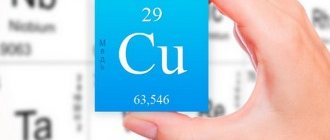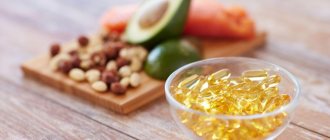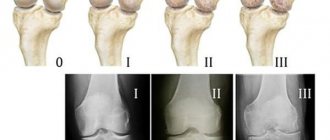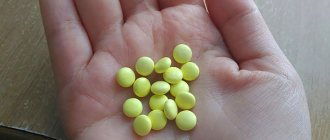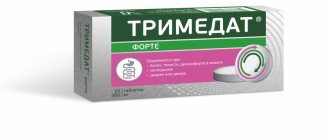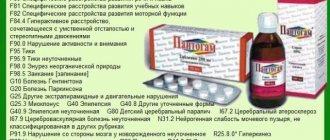All organs and tissues of the body contain coenzyme Q10. The substance is necessary for the normal functioning of the central nervous system, the health of the heart and blood vessels, and the functioning of the respiratory system.
Upon reaching 30 years of age, the level of coenzyme (coenzyme) in the body begins to fall, so it is advisable to take special dietary supplements.
What is coenzyme and why does the body need it?
Coenzyme Q10 is a unique substance necessary for metabolism and providing energy for all vital processes in the body.
The main benefits are expressed in:
- reducing the harmful effects of free radicals on cells and protecting cells from harmful destruction;
- maintaining energy production for reactions in the body, coordinated operation of all systems;
- maintaining the heart muscle in working condition by improving energy exchange and normalizing rhythm;
- increasing the ability to bear children in adulthood, improving the quality of eggs and sperm;
- slowing down the aging process, maintaining the external beauty and elasticity of the skin;
- support of mental activity.
Effects of using ubiquinol
Coenzyme Q10 is important for the entire body, therefore the effectiveness and benefits of ubiquinol must be considered separately for all systems, organs and tissues. First of all, ubiquinol is needed to create ATP - the main source of energy, thanks to which all organs and muscles can function. Therefore, with a deficiency of the substance, fatigue, lethargy increases, and performance decreases. Also, a constant deficiency of the substance can lead to a number of chronic diseases and abnormalities.
The following organs need Coenzyme Q10 most:
- Brain;
- Liver;
- Lungs;
- The cardiovascular system;
- Kidneys.
The substance is also necessary for skeletal muscles.
Another important function is the antioxidant effect. Coenzyme Q10 is one of the most powerful antioxidants, which is important for suppressing the activity of free radicals and oxidative processes. This provides:
- Protecting cells from damage and failures;
- Cell rejuvenation, which is used not only in anti-aging therapy, but also to slow down the aging of internal organs and reduce age-related muscle atrophy;
- Protecting and reducing the risk of cancer.
The body is able to independently produce coenzyme Q10. But over time, this process slows down significantly, which is one of the reasons for the aging of the body. It is very difficult to compensate for the substance from food, so it is better to take ubiquinol as a supplement. This is the most effective and convenient way to maintain the required level of coenzyme Q10 in the body.
Women's bodies especially need ubiquinol, as it is one of the best ways to maintain beauty and youth. Unlike many dubious drugs, coenzyme Q10 affects not only the skin, but also overall health. Maintaining high levels of the substance in the blood leads to a number of effects:
- Maintaining skin elasticity;
- Smoothing and reducing the appearance of wrinkles;
- Improving facial tone, eliminating age spots and other defects;
- Increased regenerative processes in the skin;
- Normalization of the sebaceous glands
There is also data that shows increased fertility and improved functioning of the reproductive system in women. Therefore, it is better to include ubiquinol in the list of supplements when planning pregnancy.
The use of ubiquinol in sports
Every year the use of coenzyme Q10 in the sports field increases significantly. This is facilitated by modern scientific research and in-depth study of ubiquinol supplements. The substance is especially useful due to curbing oxidative stress, increasing endurance and increasing physical performance.
The main effects include:
- Increased energy levels;
- Protecting the body from hypoxic cell damage, which is caused by a lack of oxygen (especially during aerobic exercise);
- Strengthening the body's response to physical activity.
Q10 is especially popular in cyclic sports, fitness and bodybuilding. It is also used by climbers when climbing to heights.
When should you take additional coenzyme Q10?
With age, a deficiency of coenzyme Q 10 appears in the body, and a lack of the substance can also be caused by:
- genetic failure, when ubiquinone is not produced in the body;
- lack of vitamin B6;
- taking medications intended to lower cholesterol levels.
The main conditions and pathologies for which taking a dietary supplement with coenzyme is indicated:
- deterioration of resistance to physical activity;
- prostration;
- sleep problems;
- disruptions in the activity of the heart (coronary disease);
- arterial hypertension, vascular atherosclerosis;
- weakening of immune defense;
- senile dementia;
- metabolic problems, excess weight, diabetes;
- atrophic processes in the brain;
- autoimmune diseases;
- pathologies of the respiratory system in a chronic form.
Dietary supplements with coenzyme are actively used by athletes to increase endurance and quickly restore muscles after exercise. In bodybuilding, the substance helps build muscle mass and burn excess fat.
Ubiquinone (coenzyme Q10). Clinical aspects
Ubiquinone (coenzyme Q10, CoQ10) is an extremely common coenzyme that is present in all living cells of animals, plants, fungi and microorganisms. Hence its second name - “ubiquinone”, or “ubiquitous quinone”.
Ubiquinone is a vitamin-like substance and is synthesized in the body from the amino acid tyrosine with the participation of vitamins B2, B3, B6, B12, C, folic and pantothenic acids, as well as a number of trace elements. This is a complex, multi-step process regulated by several enzyme systems. With a deficiency of vitamins and microelements, with violations of regulatory enzyme systems, even outside of any pathology, the endogenous biosynthesis of CoQ10 does not meet the body's needs [28]. Its deficiency can be compensated, however only partially, by the intake of coenzyme Q10 with food.
Inside cells, ubiquinone is localized mainly in mitochondria. Its largest amount is found in the mitochondria of cells of energy-consuming organs such as the heart, liver, kidneys, and pancreas [28].
The most important function of ubiquinone is coenzyme [28]. As an obligatory component of the respiratory chain, KoQ10 carries out the transfer of electrons from membrane dehydrogenases to cytochromes in mitochondria.
No less important is another function of ubiquinone - antioxidant. Ubiquinone is one of the most important antioxidants because it is produced in the body itself. The peculiarity of CoQ10 is the ability to constantly and independently restore its antioxidant activity.
The implementation of the antioxidant and coenzyme functions of KoQ10 determines its key importance in increasing the contractility of the myocardium and striated muscles; improving blood flow in the myocardium; antiarrhythmic and hypotensive effects; increasing tolerance to physical activity, anti-atherosclerotic effect; apoptosis and slowing down the aging process [14, 36–38, 42–45].
The normal blood level of coenzyme Q10 in adults is about 1 mg/ml. To obtain a therapeutic effect, adults need to take at least 100 mg/day, which will increase the coenzyme level in the blood to approximately 2 mg/ml or more. It is difficult to consume such amounts of coenzyme Q10 in foods [30, 38].
This problem is especially relevant for children. Numerous studies confirm the prevalence of deficiency in children of most vitamins, minerals, essential microelements and dietary fiber. It is necessary to take into account that ubiquinone consumption progressively increases during physical and emotional stress, with frequent colds in children and with chronic stress, causing a high probability of developing its deficiency [3].
The effect of CoQ10 on the cardiovascular system has been most studied. Almost 30 years of experience in clinical studies of its use in thousands of patients convincingly proves the significant role of ubiquinone deficiency in the development of cardiac pathology. It has been shown that if the level of CoQ10 drops by 25%, then the cells experience an energy deficiency and the bioenergetic metabolism of the heart muscle worsens. A decrease in CoQ10 content by 75% leads to cell death [1, 14, 36, 37]. The work of H. Langsjoen et al in 424 patients with various forms of cardiovascular pathology showed a statistically significant improvement in myocardial function when using CoQ10 at a dose of 75 to 600 mg per day [25]. The authors believe that CoQ10 is a safe and effective additional agent, the use of which not only improves clinical results, but also reduces the total costs of treatment.
FL Rosenfeldt et al [36, 37] believe that CoQ10 improves energy production in mitochondria, bypasses defective components of the respiratory chain and reduces the effects of oxidative stress. They hypothesize that pretreatment with CoQ10 before stress may improve myocardial recovery after stress. Taking into account the data on a significant correlation between the severity of circulatory failure and a decrease in CoQ10 levels, SA Mortensen suggested the advisability of its use in the treatment of chronic heart failure [31]. Subsequently, a significant number of experimental and clinical studies were carried out on the use of CoQ10 in the treatment of chronic heart failure. The meta-analysis by SA Mortensen [32] included 13 double-blind randomized trials. Only 10% of the 1000 patients participating in the study reported neutral results. In all the rest, reliable evidence was recorded of improving the functional class of patients, increasing exercise tolerance, and reducing the frequency of hospitalizations.
Some experience has also been gained in the use of CoQ10 (Kudesan) in children with chronic tachyarrhythmias, long QT syndrome, cardiomyopathies, extrasystole, and sick sinus syndrome. The indication for prescribing Kudesan in 386 children with the listed diseases was the presence of disturbances in myocardial repolarization processes according to standard electrocardiography. Kudesan was prescribed for 1 month against the background of basic therapy (without the use of other cardiotrophic drugs) as an additional drug, and in some children as monotherapy. A positive effect in the form of normalization of repolarization processes was detected in 30% of children. Another 40% showed a significant improvement in repolarization processes. In no case was there a worsening of ST-T disorders. The heart rate did not change significantly while taking the drug [5, 7].
The successful use of coenzyme Q10 for the therapeutic correction of mitochondrial disorders has been described in MELAS syndrome (Mitochondrial myopathy-encephalopathy-lactic acidosis, stroke-like episodes). MELAS syndrome is a classic mitochondrial disease that occurs due to a deletion or point mutation of mitochondrial DNA [15], which leads to a deficiency of the first complex of the mitochondrial respiratory chain [16]. A 24-year-old patient with this syndrome was diagnosed with a deficiency of the mitochondrial respiratory chain complex (NADH coenzyme Q reductase). The possibility of therapeutic correction of mitochondrial disorders associated with a deficiency of this complex during the use of ubiquinone has been established, which was accompanied by an improvement in the clinical condition of the patient [17].
It should be noted that today interest in metabolic (energy-tropic) therapy is not limited to cardiac and primary mitochondrial diseases.
A study by J. Kaikkonen and K. Nyyssonen found that CoQ10 is an effective plasma antioxidant that regenerates plasma vitamin E. Slovak scientists F. Gazdik and A. Gvozdjakova studied the levels of CoQ10, α-tocopherol, β-carotene and malondialdehyde (MDA) in patients with bronchial asthma. Plasma α-tocopherol and CoQ10 levels were significantly reduced compared to healthy volunteers, and MDA was increased. The authors concluded that CoQ10 plays an important role in the antioxidant balance and its use in bronchial asthma may be rational [cit. according to 5].
CoQ10 affects energy metabolism in the muscles of polio patients, although the mechanism for this effect is unclear. Possible effects of CoQ10 on peripheral blood circulation in muscles, mitochondrial phosphorylation and/or the antioxidant effect of CoQ10 [46].
Particularly noteworthy is the ability of CoQ10 to “reduce” the toxicity of drugs. Many drugs used in modern medicine have an undesirable inhibitory effect on the mitochondrial respiratory chain. It has been established that the site of action of such pharmacologically active compounds is usually the same parts of the respiratory chain in which electron transfer occurs between Q10 and other electron carriers. Therefore, if additional amounts of CoQ10 are introduced into the body, the toxicity of drugs can be significantly reduced. An example is the randomized study by Larussi et al, who examined the protective effect of coenzyme Q10 (100 mg/day) during cardiotoxic anthracycline therapy in children with acute lymphoblastic leukemia and non-Hodgkin's lymphoma. It was found that after completion of the course of antitumor therapy, the thickness of the walls of the interventricular septum decreased only in the control group (p < 0.01) [26].
The use of CoQ10 in pediatrics has long been limited to a rather narrow list of cardiac diseases [5, 7]. This was also due to the absence, until recently, of a water-soluble form of ubiquinone, which undoubtedly reduced the possibility of its widespread use in children.
According to our observations, in frequently ill preschool children, the use of CoQ10 (Kudesan) for a month at a daily dose of 15 mg can significantly improve their health (minimization of complaints and emotional lability, normalization of sleep and appetite, increased resistance to stress, etc.). At the same time, all children showed normalization of the mechanisms of autonomic regulation of the body and stabilization of cellular energy exchange [2].
In the USA, a study was conducted of the relationship between CoQ10 deficiency and the response to its additional administration in children and adolescents suffering from migraines. Studies have shown the widespread prevalence of CoQ10 deficiency in children with migraine-type headaches - 32.9%. Coenzyme Q10 1–3 mg/kg per day was recommended for these patients. After completing the course of treatment (on average after 97 days), the total level of coenzyme Q10 increased to 1.20 ± 0.59 mg/ml, while the frequency of headaches decreased from 19.2 ± 10.0 to 12.5 ± 10.8, and weakness associated with migraine - from 47.4 ± 50.6 to 22.8 ± 30.6 [21]. The possibility of treating migraine in adults with CoQ10 (300 mg per day) was demonstrated in 2005 in a randomized, double-blind, placebo-controlled trial in Switzerland [39].
Thus, an analysis of modern literature data indicates that coenzyme Q10 plays an important role in the processes of cellular energy exchange, performing coenzyme and antioxidant functions, and can be successfully used in treatment and preventive programs for various diseases in adults and children.
For questions regarding literature, please contact the editor.
S. O. Klyuchnikov, Doctor of Medical Sciences, Professor E. S. Gnetneva Russian State Medical University, Moscow
How to take medications with coenzyme correctly
For the product to be beneficial, it is important to read the instructions carefully. As a rule, it is not recommended to take the supplement before the age of 30-35. Only in some cases, coenzyme Q10 is prescribed to adolescents aged 12-14 years. It is important not to exceed the prescribed dosage, since it is less in children. On average, the coenzyme norm is 100-300 mg per day, maximum 500 mg. It is selected individually by the doctor for each person.
Coenzyme q 10 is a fat-soluble substance, so it is more effective to combine the intake of dietary supplements with meals containing fats. It is advisable not to take it at night, as increased energy production may interfere with normal sleep. Usually the norm is distributed in the morning and afternoon, or taken at a time.
The duration of the drug does not exceed two months.
In pharmacies and specialized stores you can buy coenzyme Q10 in various dosage forms.
Instructions for use of coenzyme
Your doctor should tell you how to take coenzyme Q10 correctly. If you decide to take dietary supplements for preventive purposes, as a dietary supplement, or simply as an additional source of coenzyme to prolong youth and create optimal conditions for the functioning of the body, then carefully study the manufacturer’s instructions. The basic rule is to strictly adhere to the recommended dosage. It’s easy to calculate your own dose - 1 mg Q10 per 1 kg of your body weight.
The standard daily dose in dietary supplements is 30-100 mg of coenzyme, but it may vary depending on the age, condition, and presence of diseases in a particular person. So, for professional athletes and people involved in bodybuilding and powerlifting, doctors prescribe up to 400 mg per day. When deciding how to take coenzyme for prevention and use in complex therapy of the heart muscle, brain, kidneys, and liver, you must follow the recommendations of your doctor. Tablets and capsules are not recommended to be taken on an empty stomach. The best option would be to consume them with meals.
A dietary supplement with ubiquinone does not require taking in courses; it can be used short-term or for a long period. The result can be noticed after 1-2 weeks, and the maximum effect can be achieved after six months.
Types of drugs with coenzyme Q10
Basic dietary supplements with coenzyme are available in the form:
- capsules They are well tolerated and have high bioavailability. Among the disadvantages - some capsules are large in size, not everyone can swallow them;
- hard tablets. They contain a compressed substance, but are less easily absorbed than capsules, but are more convenient to swallow;
- powder that can be added to a cream or cosmetic mask;
- chewable or suckable tablets. They are preferred by teenagers;
- liquids. It is a concentrate for oral administration; it is easy to measure the required dose and mix it with drink.
The composition of coenzyme-based drugs can also be different - with ubiquinone or ubiquinol. The first substance is obtained naturally with the addition of oils and pepper extract. Once in the tissue, it is converted to ubiquinol, which has an antioxidant effect and helps increase energy production.
The greatest benefit to the body will come from complex preparations that additionally contain omega-3 fatty acids, vitamins C, E, B and calcium.
Possible side effects
Undesirable reactions may occur if the prescribed dosage regimen is violated; overdose manifests itself:
- allergy symptoms;
- malfunction of the stomach and intestines - nausea, vomiting;
- excessive nervous excitability;
- arrhythmia;
- problems with falling asleep and quality of sleep;
- dizziness, headaches.
If you feel worse, you should stop taking it and allow the body to remove the excess substance on its own through urine.
Antioxidant properties
Coenzyme Q10 is the only fat-soluble antioxidant substance that has the ability not only to be synthesized in the body, but also to be regenerated from its oxidized form with the help of enzymes. But how do you take coenzyme to provide direct antioxidant benefits? The dosage regimen does not differ from the standard one, the main thing is to do it regularly, especially when a person is exposed to excessive physical exertion. At this time, so-called free radicals are formed in the form of an excess amount of oxygen in a very toxic form, which can destroy the cell membrane and cause malfunctions in the body. If you do not take drugs with antioxidant properties, performance decreases, and pathologies of organs and systems develop. The coenzyme neutralizes the effect of active radicals and prevents the prooxidant effect of vitamin E.
Top drugs with coenzyme q10
The main coenzyme supplements are:
- Coenzyme Q10 from Evalar. One capsule contains 100 mg of the substance, as well as coconut oil to reduce blood cholesterol and normalize blood circulation. Allowed from 14 years of age. One package contains 30 pieces, designed for a monthly course of administration.
- Kudesan with potassium and magnesium. The action is aimed at improving the functioning of the heart. Take two tablets twice a day for one month.
- Real Caps Coenzyme Q10 Cardio. In addition to coenzyme, the capsules contain flax oil, a source of omega-3, as well as vitamin E, which improves the elasticity of blood vessels and muscles.
- Coenzyme Beauty to preserve youth. The composition contains lipoic acid and vitamin E. Take one capsule per day.
- Solgar Coenzyme Q-10. Available in the form of small capsules in a plastic shell that dissolves in the stomach. Helps fight the aging process and metabolic deterioration.
The benefits and harms of coenzyme Q10
Coenzyme Q10 is a safe supplement that can be taken on an ongoing basis. Indications include:
- Prevention of cardiovascular diseases, maintaining the health of the heart and blood vessels;
- Improving skin condition, rejuvenation, eliminating skin problems;
- Protecting and supporting the nervous system, reducing irritability, improving brain function;
- Increased metabolism;
- Improved lung health and function;
- Restoring the oral mucosa, strengthening the gums, preventing stomatitis, periodontitis and other diseases;
- Increased endurance, decreased lethargy, drowsiness and chronic fatigue.
Ubiquinone is a safe compound with no obvious contraindications. But in some cases it can cause individual side effects. If they occur, it is recommended to review the dosage or stop taking the drug. Possible side effects include:
- Headache;
- Nausea;
- Increased fatigue and irritability;
- Skin rash and allergic reactions;
- Photosensitivity.
In rare cases, there have been complaints of cardiac arrhythmias; in such cases, the supplement should be discontinued immediately.


